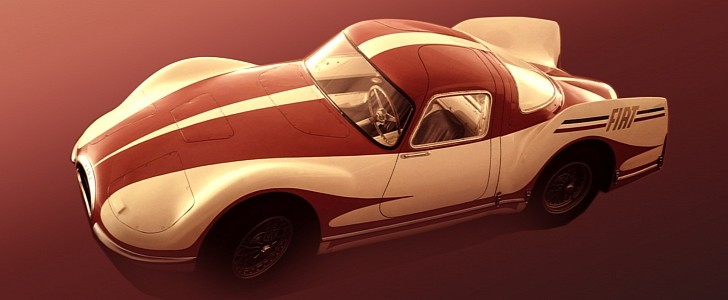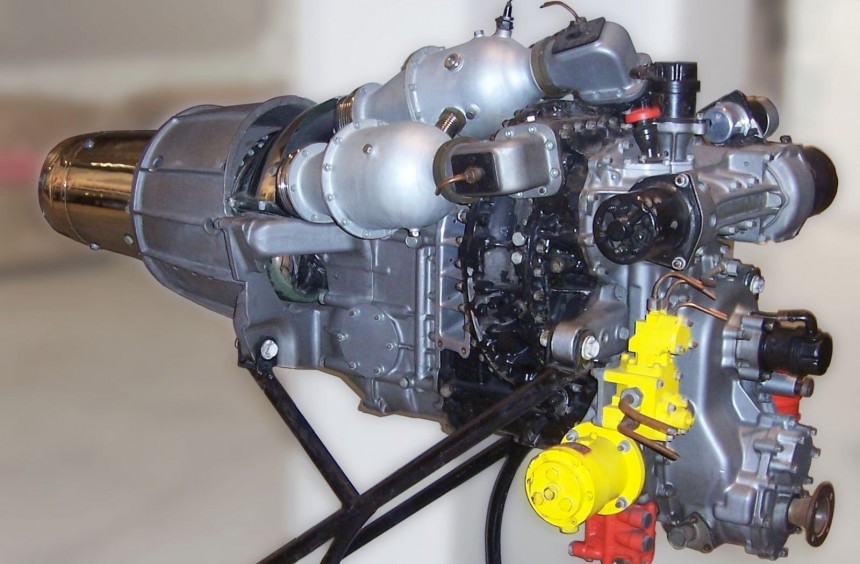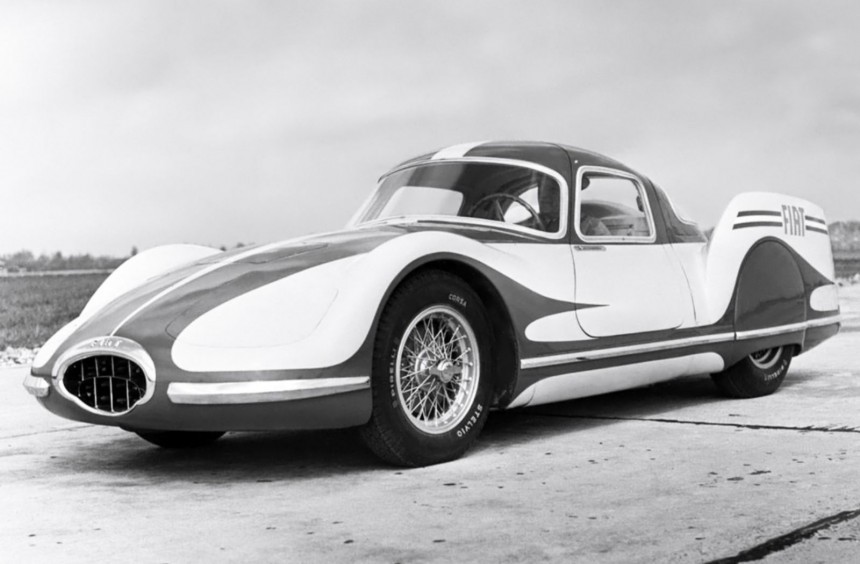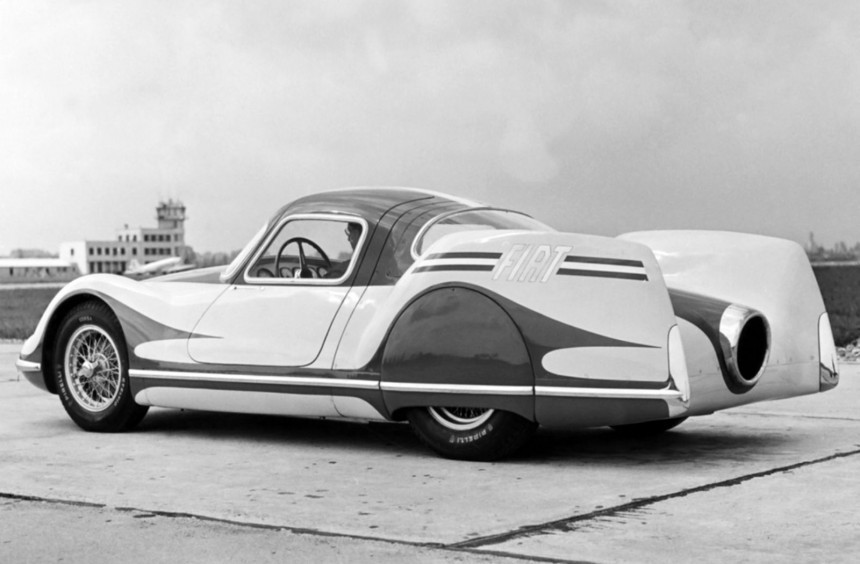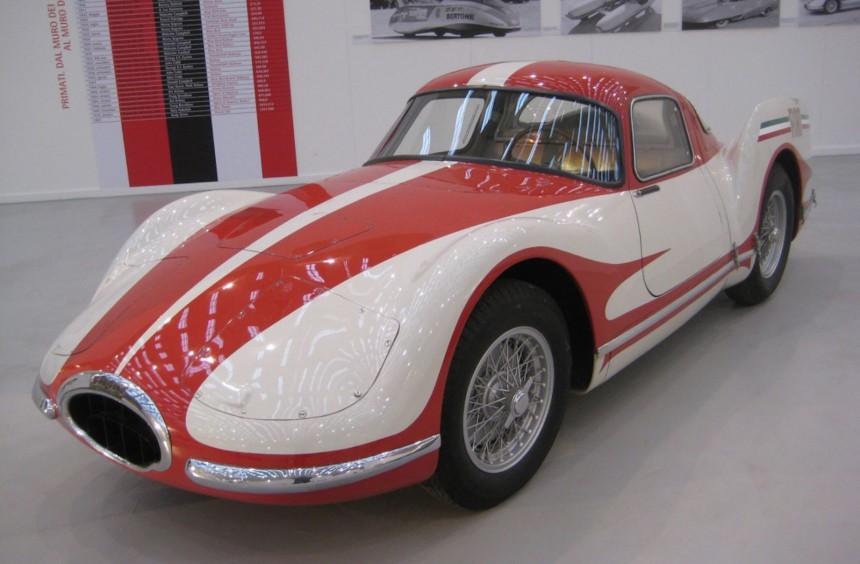While other manufacturers starting to experiment with turbocharging in the early 1950s, Fiat went one step further and developed a fascinating two-door Berlinetta that used a mid-mounted gas turbine engine.
While the technology was not new, combustion turbines started being more advanced and widespread after the Second World War, mainly thanks to the aircraft industry to which they owe the ‘jet engine’ moniker. They were a huge breakthrough that changed the way people travel, and every engineer of the day was fascinated by them.
This was also the case of Fiat’s engineering director, Dante Giacosa who thought that this technology can also fundamentally change the automotive industry. Along with Vittorio Bellicardi who was in charge of the technical calculations and a team of talented engineers, they began an extensive study on the feasibility of such a vehicle in 1948.
Back then, one of Fiat’s aerospace divisions was constructing the Ghost jet engine under license from English manufacturer de Havilland Engine Company but contrary to popular belief, it wasn’t part of the study. In fact, the whole project was extremely secretive and only a handful of employees knew about its existence. In the early stages, even top management was kept in the dark for fears that they would cancel the program.
After studying the latest innovations of the period for more than two years, Giacosa and Bellicardi were ready to start building the car. They were adamant about developing a completely new, compact engine and didn’t want to lose time repurposing an existing airplane unit. Thus, in September 1950, the design of the Tipo 8001 turbine engine kicked off and about seven months later, it was ready to be built.
The prototype unit was constructed in November 1951 and after a year of comprehensive tests of all its components, it was fully assembled and fired up for the first time.
Codenamed Tipo 8001, the turbine consisted of a two-stage centrifugal compressor, three can-type combustors, a two-stage axial turbine that drove the compressor, and a single-stage power turbine with a geared reduction that would be connected to the rear axle. According to Fiat, it could produce 295 hp (220 kW) at 22,000 rpm, with output controlled by a variable fuel metering valve.
The engine didn’t use a gearbox or clutch so driving the car would require the use of only two pedals.
By this time, Rover had revealed its gas turbine car, the JET1 prototype, and word had gotten out that General Motors were developing one across the Ocean. This gave Giacosa and Bellicardi’s project more credibility, so they finally revealed their plans to the company’s top brass. Fortunately for them, it was met with excitement and gained the funding needed to complete the car that would be called Fiat Turbina.
While engineers were running the final tests on the powerplant, the design work for the chassis and body began. After several proposals were analyzed, it was decided that a sporty, rear mid-engine layout would be the basis of the car.
Giacosa constructed a tubular steel chassis with a 2400 mm wheelbase. It employed a fully independent double-wishbone suspension system and hydraulic drum brakes borrowed from the recently-developed 8V sports car. Furthermore, kerosene tanks were fitted to each side member, while six-volt batteries were mounted in the front section.
With the engine and chassis completed, Luigi Rapi was tasked to design the bodywork. Using the wind tunnel at the Politecnico di Torino, he developed a gorgeous streamlined two-seat Berlinetta that was highlighted by a pair of stabilizing rear fins. The body was so aerodynamically efficient that it achieved a drag coefficient of just 0.14, a record-setting figure for an automobile that wasn’t beaten for the next 30 years.
Finished in a racy two-tone white and red color scheme, it had fixed side windows, no headlights or taillights, and sat on Borrani 16-inch wire wheels equipped with Pirelli tires.
The spartan interior featured black bucket seats and a white dashboard that housed no less than a dozen gauges. A simple cover separated the cabin from the engine and with no soundproofing, driving around in the Turbina for an extensive period would have been a deafening experience.
By March 1954, the car was fully assembled, and the first test run was carried out a month later on Fiat’s famous track located on the rooftop of the Lingotto plant.
After some final tweaks, the jet-powered concept was revealed to the public at the Turin Motor Show where it was met with excitement by everyone in attendance.
Soon after the show, Fiat showcased it at a public event held on the Turin-Caselle Airport with chief test driver Carlo Salamano behind the wheel. The car proved stable and agile, pleasing the company’s leading figures who were watching from the sidelines.
Although development continued for another two years, the project was eventually abandoned, mainly because of frequent overheating issues and high fuel consumption.
While it never made it into series production, the Fiat Turbina remains one of the few fully functional jet-powered cars ever created. Today, the beautiful and innovative concept can be admired by anyone visiting the Museo Nazionale dell’Automobile in Turin.
This was also the case of Fiat’s engineering director, Dante Giacosa who thought that this technology can also fundamentally change the automotive industry. Along with Vittorio Bellicardi who was in charge of the technical calculations and a team of talented engineers, they began an extensive study on the feasibility of such a vehicle in 1948.
Back then, one of Fiat’s aerospace divisions was constructing the Ghost jet engine under license from English manufacturer de Havilland Engine Company but contrary to popular belief, it wasn’t part of the study. In fact, the whole project was extremely secretive and only a handful of employees knew about its existence. In the early stages, even top management was kept in the dark for fears that they would cancel the program.
After studying the latest innovations of the period for more than two years, Giacosa and Bellicardi were ready to start building the car. They were adamant about developing a completely new, compact engine and didn’t want to lose time repurposing an existing airplane unit. Thus, in September 1950, the design of the Tipo 8001 turbine engine kicked off and about seven months later, it was ready to be built.
Codenamed Tipo 8001, the turbine consisted of a two-stage centrifugal compressor, three can-type combustors, a two-stage axial turbine that drove the compressor, and a single-stage power turbine with a geared reduction that would be connected to the rear axle. According to Fiat, it could produce 295 hp (220 kW) at 22,000 rpm, with output controlled by a variable fuel metering valve.
The engine didn’t use a gearbox or clutch so driving the car would require the use of only two pedals.
By this time, Rover had revealed its gas turbine car, the JET1 prototype, and word had gotten out that General Motors were developing one across the Ocean. This gave Giacosa and Bellicardi’s project more credibility, so they finally revealed their plans to the company’s top brass. Fortunately for them, it was met with excitement and gained the funding needed to complete the car that would be called Fiat Turbina.
Giacosa constructed a tubular steel chassis with a 2400 mm wheelbase. It employed a fully independent double-wishbone suspension system and hydraulic drum brakes borrowed from the recently-developed 8V sports car. Furthermore, kerosene tanks were fitted to each side member, while six-volt batteries were mounted in the front section.
With the engine and chassis completed, Luigi Rapi was tasked to design the bodywork. Using the wind tunnel at the Politecnico di Torino, he developed a gorgeous streamlined two-seat Berlinetta that was highlighted by a pair of stabilizing rear fins. The body was so aerodynamically efficient that it achieved a drag coefficient of just 0.14, a record-setting figure for an automobile that wasn’t beaten for the next 30 years.
The spartan interior featured black bucket seats and a white dashboard that housed no less than a dozen gauges. A simple cover separated the cabin from the engine and with no soundproofing, driving around in the Turbina for an extensive period would have been a deafening experience.
By March 1954, the car was fully assembled, and the first test run was carried out a month later on Fiat’s famous track located on the rooftop of the Lingotto plant.
After some final tweaks, the jet-powered concept was revealed to the public at the Turin Motor Show where it was met with excitement by everyone in attendance.
Although development continued for another two years, the project was eventually abandoned, mainly because of frequent overheating issues and high fuel consumption.
While it never made it into series production, the Fiat Turbina remains one of the few fully functional jet-powered cars ever created. Today, the beautiful and innovative concept can be admired by anyone visiting the Museo Nazionale dell’Automobile in Turin.
